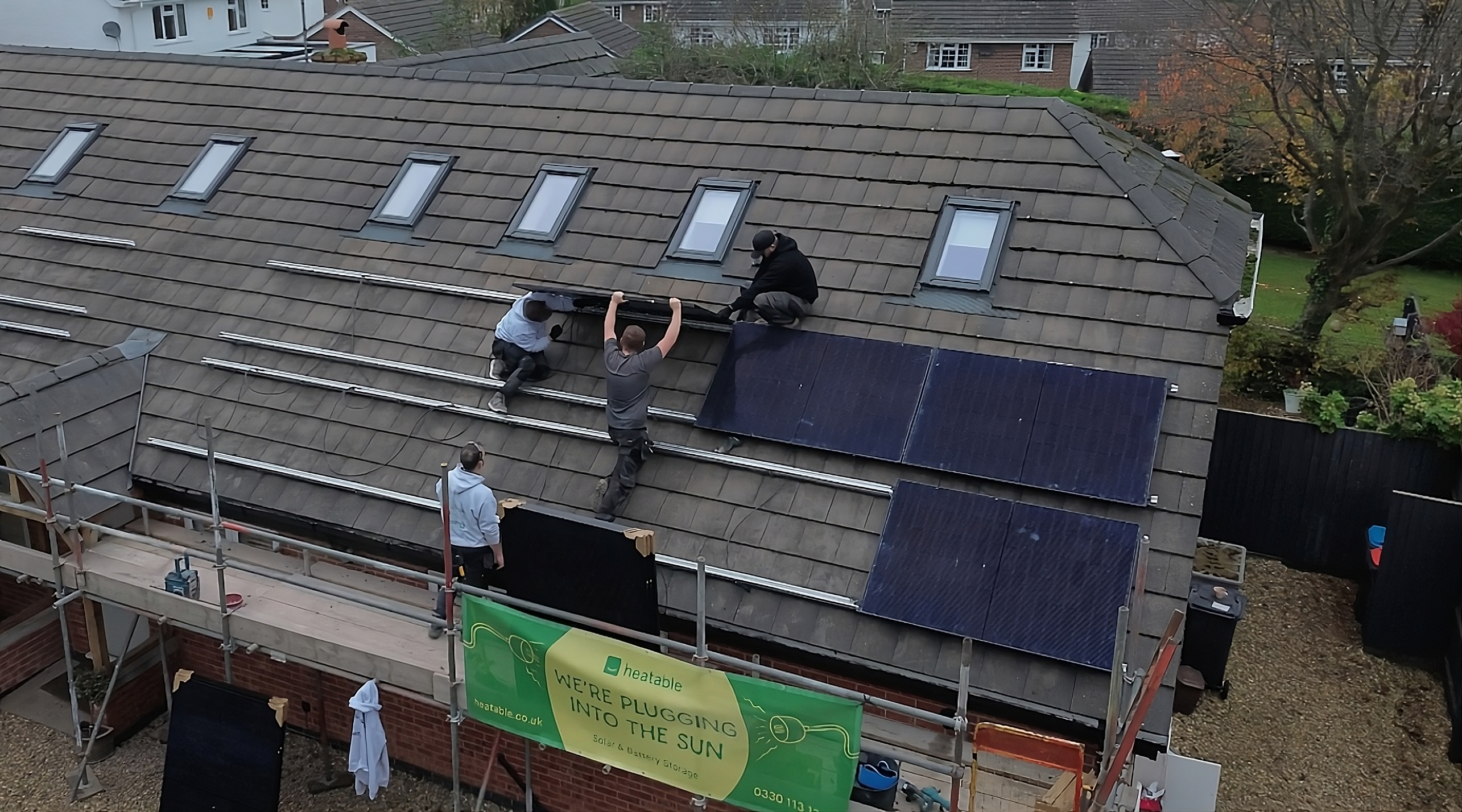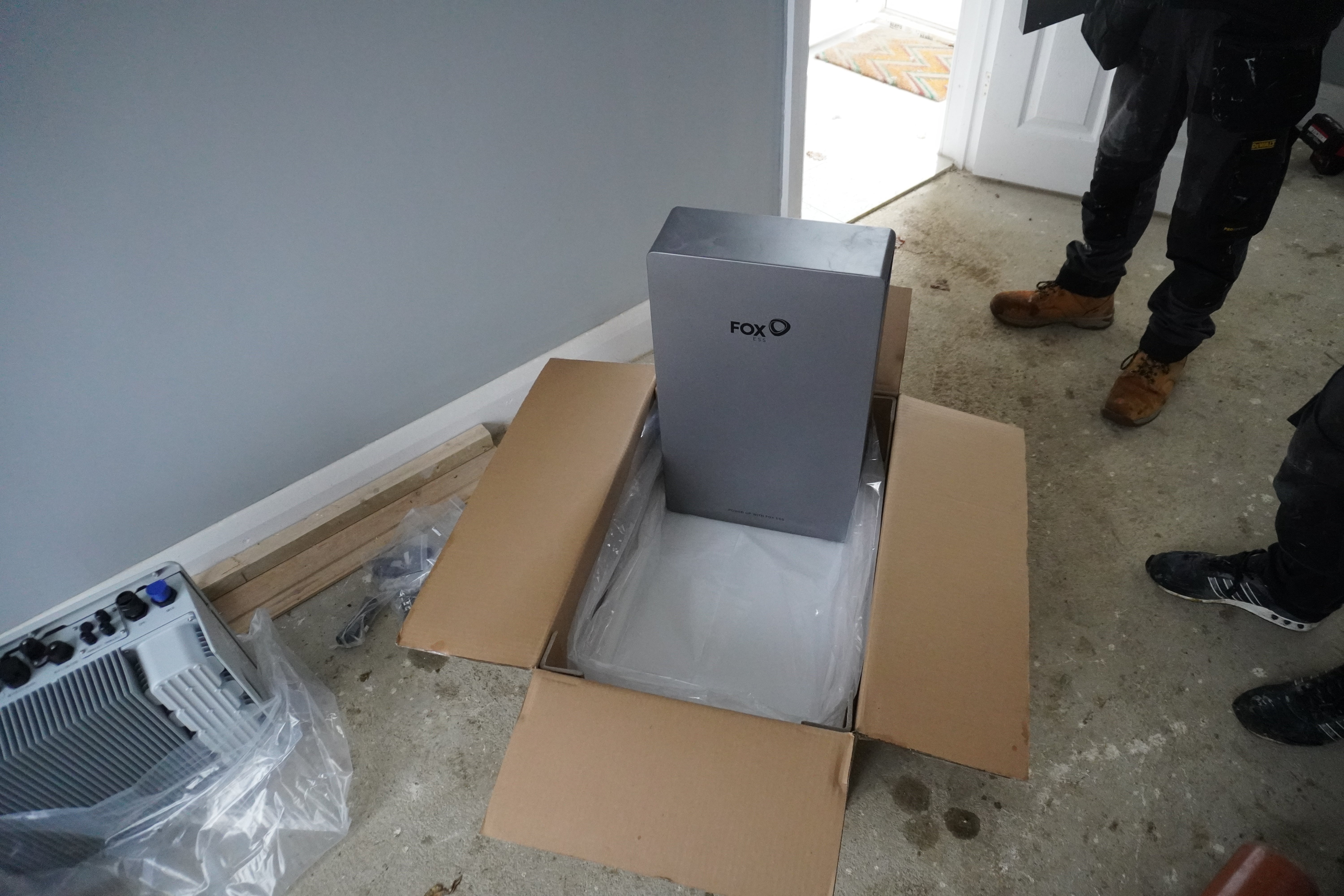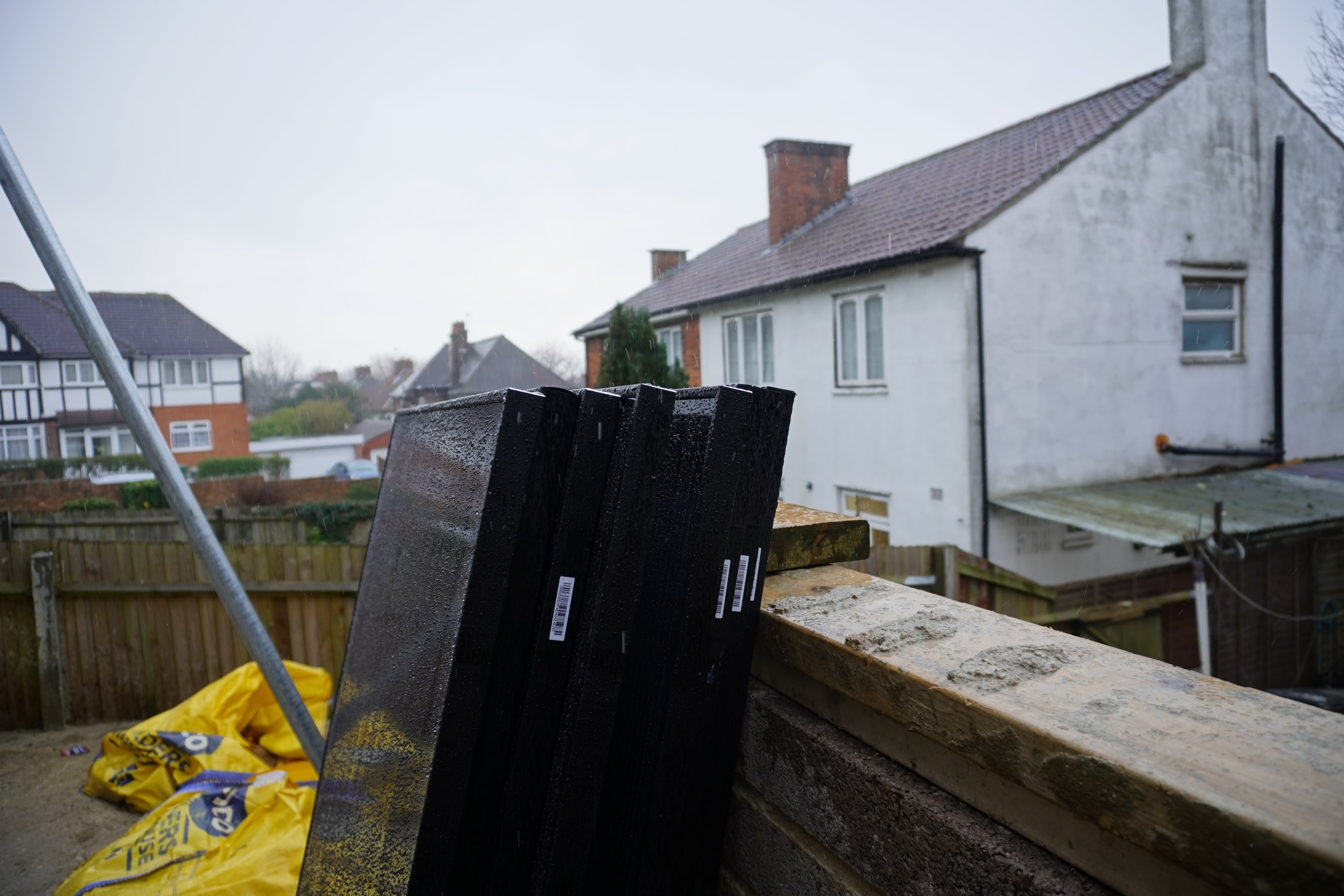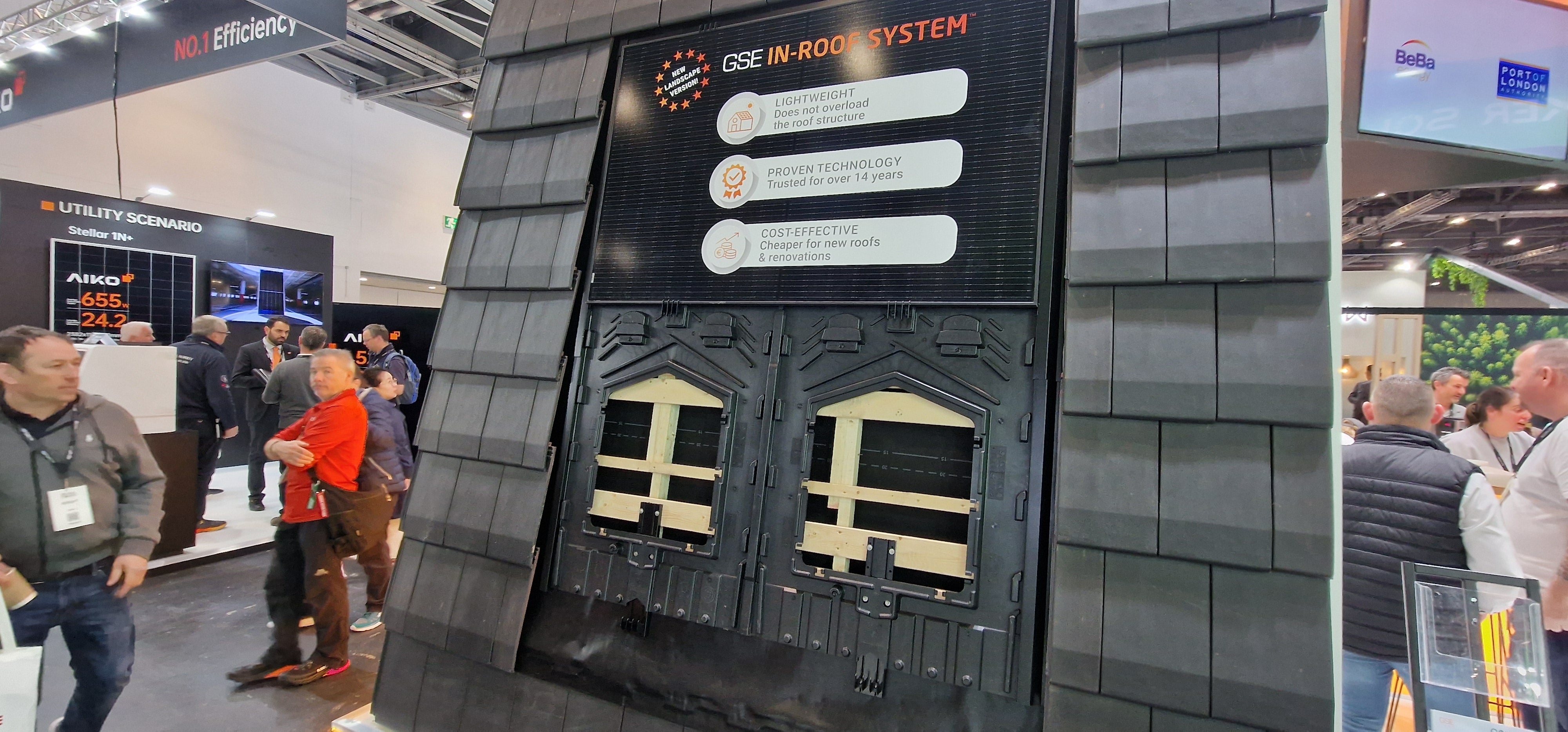ARTICLE AD BOX
The average cost of an eight-panel array in the UK is £4,990, and £6,740 with a 5kwh battery.
With this setup and today’s energy prices, it will take about 11 years to get your money back, although there are many factors which can lengthen and shorten this timeline, sometimes quite dramatically.
With energy prices rocketing again, now may be a good time to consider investing in solar panels to generate your own electricity.
In April, the energy price cap rose by 6.4 per cent, taking the average household bill to £1,849 per year for a typical home using electricity and natural gas.
The process is a simple one: hire a company to pop some solar panels on your roof, as well as some other gadgetry, and you can start using the electricity in your home from your own plug points, slashing your electricity bills.
Before considering solar panel installation, it’s worth doing the maths to measure your own electricity usage. You’ll want to know how much you use and when, since the sun, of course, only shines during the day, which is when the power will be delivered.
If you work away from home and want more power after dark, solar panels could still be a good buy. You can sell the energy back to the grid as long as you are willing to shop around for a good deal. Or you can buy a battery to store your energy for when you want it.
Depending on your choice, the maths around how quickly you recoup your investment becomes a bit more complicated.
How much do solar panels cost in the UK?
Like any gadget, solar panels vary in cost. Our reviews will help you choose which panels may be best for you.
It’s worth bearing in mind that most fitters will have brands they prefer to supply, so it could be best to choose an installer first, or pick a few brands and then choose a fitter.
How many you need will depend on the size of your home and your energy usage. It will also depend on your roof space and how much of it is south facing – the best side in the northern hemisphere.

You’ll need an inverter, which converts the DC output from solar panels into an AC output that your home can use. You’ll also need materials to fix it to the roof, cables, a meter and a few other goodies.
A big chunk of the final price is scaffolding and labour costs. These mean that bigger arrays with more panels end up being more cost-effective, since the panels themselves are only a small part of the final bill.
Below is a quick summary of prices to expect:
Household size | System size in kw | Number of solar panels | Array cost | Battery size and cost | Total cost |
3-bed | 3.6kw | 8 | £4,990 | 5kwh £1750 | £6,740 |
4-bed | 5.4kw | 12 | £5,470 | 5kwh £1750 | £7,220 |
5-bed+ | 9.9kw | 22 | £ 7,390 | 5kwh £1750 | £9,140 |
How much are solar panels?
Solar panels have tumbled in price since they began being produced in earnest, about 50 years ago.
They are now the cheapest they have ever been. Each panel can vary from about £90 to £300 apiece. Once you know this, you can see that the cost of everything else, including fitting and connecting the panels can dwarf the cost of the panels themselves.
This is because labour costs have surged over the same timeframe, and for domestic-sized installations, fitting can be your biggest cost.
Solar setup costs
According to fitters Glow Green, a decently sized array of 22 450W panels delivering up to 9.9kW will cost £7,947.43 including fitting.
Their work is guaranteed for five years, but the typical lifespan of the panels is up to 50 years. Smaller arrays with cheaper panels can start from about £5,000.
Most of the cost is in fitting the panels.
According to government figures, the overall cost of fitting panels has risen in recent years, in spite of declining panel costs.
Adjusted for inflation, fitting a kilowatt of solar capacity for a 4-10kw array in 2014 cost £1,586, dropping to £1,295 in 2019. But since then it rose again and last year it cost £1,694.
This isn’t all bad news, however, as panel capacities are increasing. Where 10 years ago a panel might supply 200-350 watts, output of 400-500 watts is now possible. Since most domestic installs will make use of all available space to justify the scaffolding and labour costs, this means your array may cost more, but it will supply far more power for the same space.
Solar battery price
Many people will be out during the day and use more electricity to cook, light and heat their homes in the evening.
If you could get as much selling your energy to the grid during the day as your energy company charges you for buying it at night, this would not matter.
But the amounts offered can be pitiful, so storing your own energy could make more sense. You pay about 27p per kilowatt hour under the energy price cap and unless you sell to your supplier, the best prices for selling are 12p. Some companies only offer 1-2 pence.
A battery costs around £5,000 on top of a new solar panel system, according to fitters Heatable. That’s a significant extra spend, which means that breaking even on this investment might take longer than buying a solar panel system on its own.
Doing some rough maths, with a 15-year life and a £5,000 cost, you would need a battery on its own to save you £333 a year, which may prove a tall order on a smaller home.

The maths gets even more complicated because it depends heavily on when you use power and if you can store it in other ways. If you can charge your electric car during the day from your solar panels, you might not need a battery because you will use lots of the power you generate.
If you suffer power outages and want to charge your car at night however, it could be a good plan. You can also use cheap overnight electricity to charge it and use the stored power during the day if you choose a tariff that allows that.
Either way, it’s a good option for those looking to reduce their reliance on the grid and fix their costs away from the volatile pricing of electricity in recent years.
If you want to know more, you should read our dedicated batteries guide.
Other solar panel costs to consider
As well as the panels, fitting and scaffolding to put them on your roof, plus the optional cost of a battery, there are a few other items you will need as part of your solar setup.
You will need an inverter. This converts the direct current (DC) power from the panels to the alternating current (AC) that your home's ring main uses. It accounts for about a tenth of the cost of the install.
You will also need a meter to show how much unused power you are exporting to the grid.
Then there’s wiring and mounting hardware to fix the panels and other equipment to the roof and walls.
How many solar panels will you need?
The answer to this is probably answered by the size of your roof. Most of the money you pay towards a solar installation on a home, unless it is very big indeed, is on everything other than solar panels, including labour costs, the other electrical items you need and scaffolding.
Therefore, to get the best out of your installation, you should probably fit as many as you can in order to get the fastest return on your investment and justify the other, largely fixed costs.
Any energy you don’t use, you can sell back to the grid, speeding up your returns.

According to fitter Heatable, the number most households need is typically 10-15.
If you can only fit fewer than eight, you should consider carefully whether solar is a good investment at this stage as you will produce less power and recouping your investment will take longer.
How much money can I save with solar panels?
According to fitters Glow Green, a decently sized array of 22 450W panels delivering up to 9.9kW will cost £7,947.43 including fitting.
According to Glow Green’s calculations, the system will generate 7,161kW hours of power a year. Adjusting for energy inflation using a figure of 7 per cent and applying a discount rate of 3.5 per cent – an inflationary rate used to value future income in today’s money – the company says the cost of the array can be recouped in about five years.
Lower interest rates, which would indicate slower-rising electricity prices and a customer’s energy use patterns, can all affect this rate and make the payback timeframe longer.
How much you get for exporting the energy you don’t use will also affect the rate of return. Some estimates suggest it could take 13 years but, if the panels last 30 years, that’s still 17 years of “free” electricity from the panels.

Average solar panel savings based on system size
As you can see from the summary table towards the top of the article, there are economies of scale in buying solar. In other words, almost tripling the number of solar panels you fit from 8 to 22 only moves the price up by about a half.
This means that buying a bigger system should mean a quicker return, since your price per watt of output should be lower.
A number of things conspire to make the maths harder than it could be, however.
Much will depend on what price you get for your exported electricity. Tariffs vary widely. If you keep on top of things, however, you should be able to get about 15p per kilowatt hour.
A bigger array may require more maintenance, which could up costs. If you use lots of energy during the day, when the panels are generating, you will save more. If energy prices go up you will save more and if they go down, you will save less.
When will my solar panels pay back?
Let’s do some rough sums anyway, courtesy of the Energy Saving Trust.
Taking our 3.6 kw eight-panel system and using an address in London, assuming a family of three and typical use (no heat pumps, high daytime usage or electric car charging), we will save £460 per year – £185 on savings to our electricity bill and £275 in payments for our sold electricity. That means it will take just under 11 years for us to recoup our investment. After that, we gain £460 a year for nothing for as long as the equipment lasts, which for the panels could be 30 years. The inverter will need to be replaced after 12 at a cost of £600.
Other assumptions include no shade on the panels and that someone is in, using power for about half the day and an export price of 15 pence per kilowatt hour. Other than a new inverter, no other maintenance costs are assumed, and no financing costs are assumed.
If we take our bigger 5.4kw example, and the same assumptions but four users, we will save £670, about two-thirds of which comes from exported energy. The installation is £5,470, so it takes eight years to recoup the cost.
Taking our biggest option of 9.9kw and a family of five, we save £1,400 a year, 85 per cent of which comes from sales to the grid. The installation cost £7,390 so it takes just five years to recoup the cost.
Bigger is better, if you have the space.
How can I reduce the cost of solar panels in the UK?
For most buyers, this is difficult, but two options stand out.
Until 2027, solar panels and installations are zero-rated for VAT. After that, VAT returns to 5 per cent, where it was in 2022 when the government applied the discount.
As well as this, there is a group-buying scheme called Solar Together, which is operated through local councils. Solar panel providers bid for the chance to install the solar panels for a number of applicants. It is available in certain local authorities that have signed up to the scheme. It can cut costs by 30 per cent by arranging the work for a number of homes at once.
If you receive benefits, you could qualify for free solar panels through one of a number of government schemes, including the Welsh Government Warm Homes Nest scheme and the Energy Company Obligation 4 (ECO4) grant.
You can read more about these schemes in our guide on solar grants.
How to pay for solar panels – subscriptions, financing and loans
The best way to pay for solar panels is from savings. Financing costs are likely to greatly extend the time until your investment pays for itself.
Most installers offer some sort of financing but at quite uncompetitive rates. If you must borrow, choose a high street lender. It will involve more paperwork but it will halve the interest rate you pay, on average.
The one outlier is Sunsave, which offers low borrowing rates over the life of your solar installation. It offers rates of 3.3 per cent per year, but there is a maintenance and monitoring fee to pay as well. The length of the loan, 20 years, makes it still more expensive than using savings.
You can read more about Sunsave and other installers in our expert guide.
What to look for in a solar panel quote
The key thing, as ever, is to gather a few quotes and read them very thoroughly. An outlying quote may have a very limited guarantee where you will be left in the lurch if things go wrong.
Make sure that there is a breakdown of parts and labour and that you are happy with the prices of each and that the brands and output of the system match what you have been told in the sales process.
If you accept cheaper panels and they are fitted without you noticing, it’s very difficult to get them replaced later on.
How we made this guide
We spoke to solar companies and fitters across the UK as well as insiders in the solar market to deliver the best research on solar costs in the UK today.
Why Trust Us
The Independent has been reporting on green energy and climate matters since it was founded in 1986. Since then, we have written hundreds of reviews and news stories on energy, including the best solar fitters and various other guides on green power.
FAQs
Do solar panels increase the value of my house?
The quick answer is, probably. There are lots of estimates floating about as to how much your home will increase in value with solar panels. The honest answer is, no one knows by how much, because you can’t sell the same property twice on the same day, both with and without panels, to work out the difference.
Solar panels mean cheaper, or maybe free, electricity, so they should be attractive to buyers, so long as they are in good working order and don’t break any local planning laws.
How expensive is a solar panel?
They are getting cheaper all the time, but you can pick up panels for about £90 to £300 apiece. You will need them fitted and various other electrical parts to make them work, however.
How much does it cost to pigeon-proof solar panels?
Imagine the scene – you have had nice shiny panels installed and then the gap between the panel and your roof becomes a nest for pigeons or, worse, a colony of noisy seagulls. You can avoid that by pest-proofing your panels.
One way to is recess the panels in your roof, an expensive solution but a very visually pleasing one. This makes most sense if you are having your roof overhauled. This will cost hundreds of pounds, depending on the number of panels, but you will save money on tiles, as you can see in the picture below.

A cheaper solution is fitting bird spikes, which will put them off landing. These start at about £25. A compromise between these two is bird netting which costs up to £200 for an average roof, plus fitting costs.
This is best done when the panels are installed.









 English (US) ·
English (US) ·